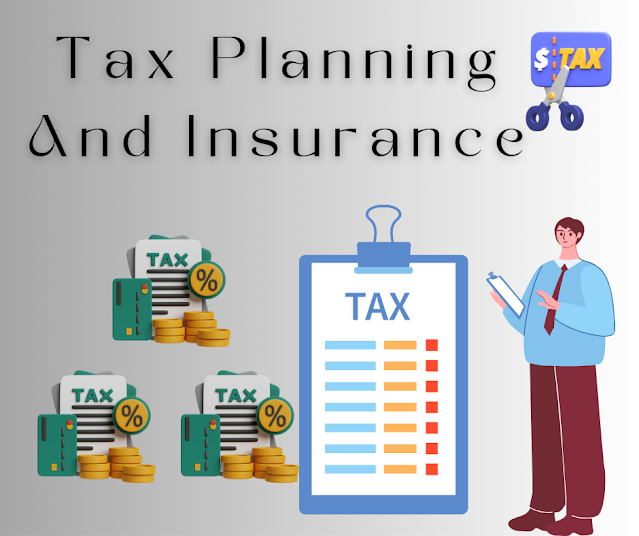Introduction:
Tax planning and insurance are two essential components of a comprehensive financial strategy. While tax planning focuses on minimizing tax liabilities and maximizing savings, insurance provides protection against unforeseen risks and financial losses. When combined strategically, tax planning and insurance can help individuals and businesses optimize their financial health and achieve long-term financial goals. This article explores the relationship between tax planning and insurance and how they can work together to maximize savings and protection.
1. Understanding Tax Planning:
Tax planning involves proactively managing finances to minimize tax liabilities and take advantage of available tax incentives, deductions, and credits. Effective tax planning requires careful consideration of individual or business income, expenses, investments, and financial goals. By implementing tax-efficient strategies, individuals and businesses can reduce their tax burden and maximize savings, allowing them to retain more of their income and invest in future growth.
2. Exploring Insurance:
Insurance serves as a financial safety net, providing protection against various risks and uncertainties, such as property damage, liability claims, illness, disability, or loss of life. Common types of insurance include health insurance, life insurance, disability insurance, property and casualty insurance, liability insurance, and long-term care insurance. Insurance policies offer financial compensation or coverage for covered losses, helping individuals and businesses mitigate financial risks and recover from unexpected events.
3. Leveraging Tax-Advantaged Insurance Products:
Certain insurance products offer tax advantages that can complement tax planning strategies and enhance overall financial planning. For example, contributions to health savings accounts (HSAs) and flexible spending accounts (FSAs) are made with pre-tax dollars, reducing taxable income and providing tax savings for qualified medical expenses. Similarly, cash value life insurance policies, such as whole life or universal life insurance, offer tax-deferred growth and tax-free death benefits, providing a tax-efficient way to protect loved ones and build wealth over time.
4. Deducting Insurance Premiums:
In some cases, insurance premiums may be tax-deductible for individuals or businesses, further reducing taxable income and lowering tax liabilities. For example, self-employed individuals may be eligible to deduct health insurance premiums as an above-the-line deduction, reducing their adjusted gross income (AGI) and taxable income. Similarly, businesses can typically deduct premiums paid for business-related insurance coverage, such as property and casualty insurance, liability insurance, or business interruption insurance, as ordinary and necessary business expenses.
5. Protecting Income and Assets:
Insurance plays a crucial role in protecting income and assets from unforeseen risks and liabilities. Disability insurance provides income replacement in the event of a disabling illness or injury, ensuring that individuals can maintain their standard of living and financial obligations. Property and casualty insurance protects against property damage or loss due to fire, theft, natural disasters, or other covered perils, preserving assets and financial stability. Liability insurance shields individuals and businesses from legal claims and financial liabilities arising from accidents, negligence, or personal injury claims.
6. Evaluating Coverage Needs:
When incorporating insurance into tax planning strategies, it's essential to evaluate coverage needs carefully and ensure adequate protection against potential risks and liabilities. Consider factors such as income, assets, lifestyle, dependents, health, occupation, and financial goals when selecting insurance policies and coverage levels. Work with a qualified insurance agent or financial advisor to assess your insurance needs, compare policy options, and tailor coverage to your specific circumstances and objectives.
7. Reviewing and Updating Policies Regularly:
Tax laws and insurance needs may change over time due to changes in personal circumstances, financial goals, or legislative updates. It's important to review and update insurance policies and tax planning strategies regularly to ensure they remain aligned with your objectives and provide adequate protection and tax savings. Periodically reassess coverage levels, premiums, beneficiaries, and policy terms to address any changes in your financial situation or lifestyle.
Conclusion:
Tax planning and insurance are integral components of a comprehensive financial strategy that work together to optimize savings and protection. By leveraging tax-advantaged insurance products, deducting insurance premiums, protecting income and assets, and evaluating coverage needs, individuals and businesses can minimize tax liabilities, mitigate financial risks, and achieve long-term financial security. Incorporate tax planning and insurance into your overall financial plan to maximize savings, protect against unforeseen events, and achieve your financial goals with confidence and peace of mind. Consult with a qualified tax professional or insurance advisor to develop a personalized strategy tailored to your unique needs and objectives.


